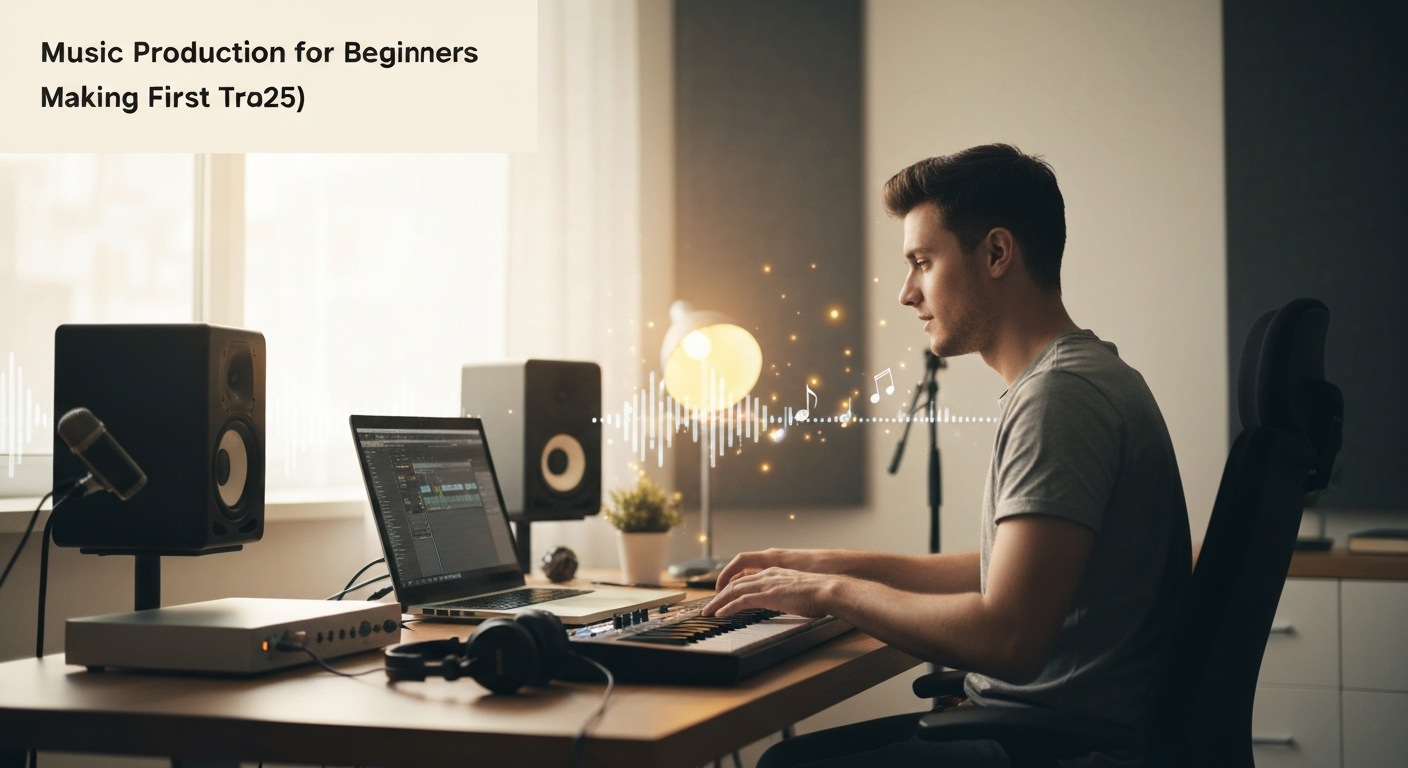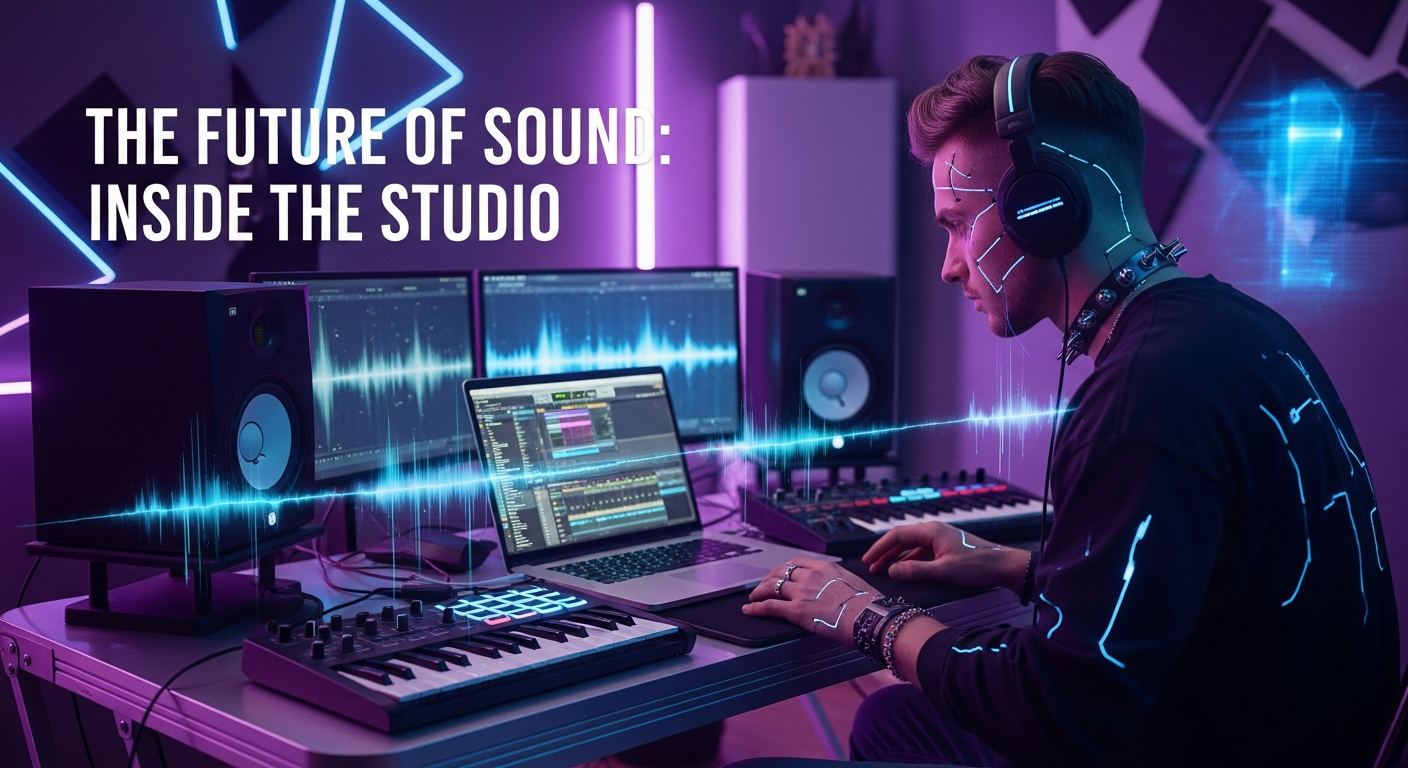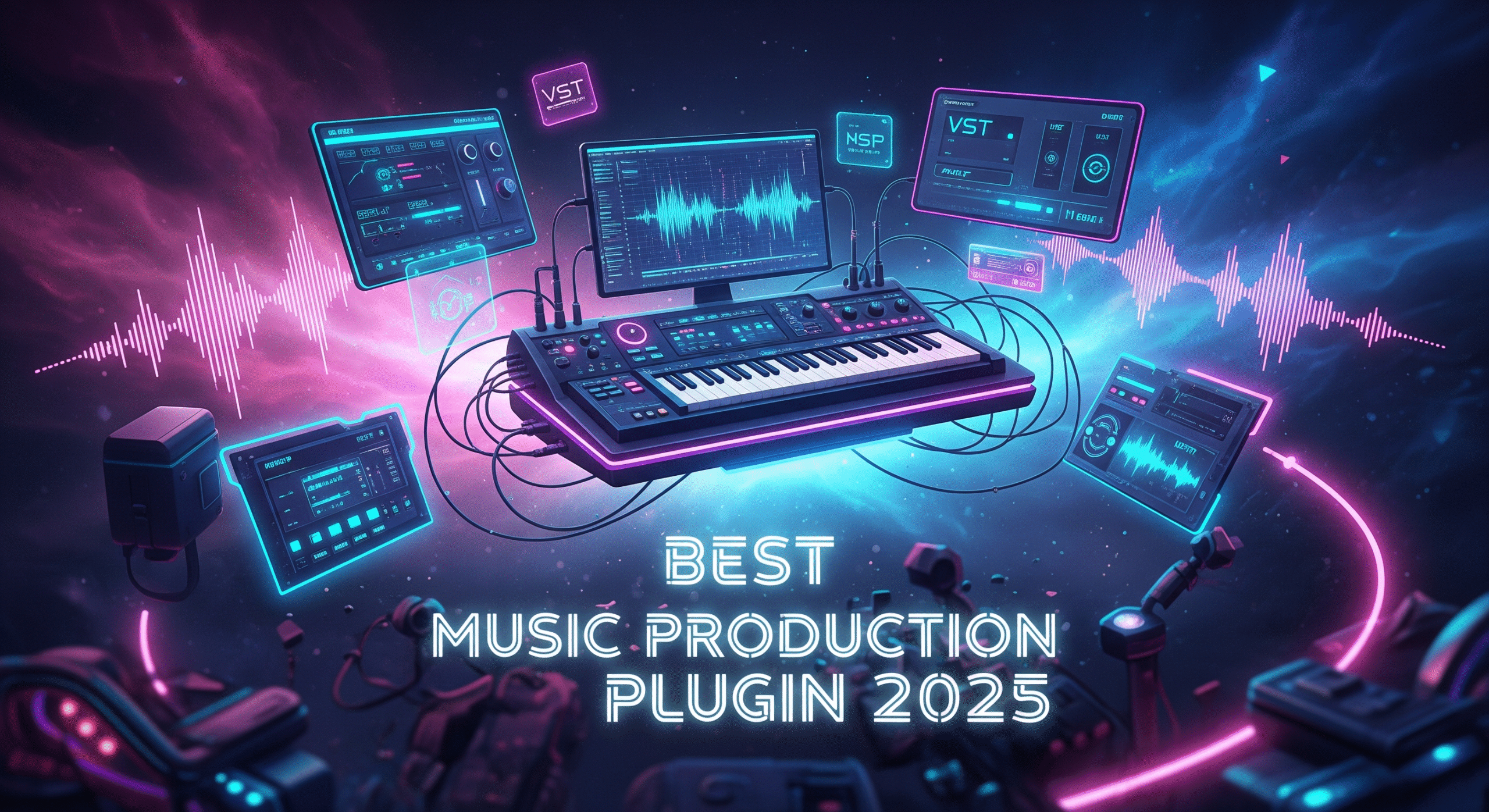Introduction
Ready to make your own music but not sure where to start? This music production beginner’s guide is your shortcut to learning everything you need about equipment, software, and step-by-step techniques. Whether you’re aiming to produce hip-hop, EDM, pop, or experiment with sounds at home, this guide covers the tools, essential tips, and practical steps to help you confidently create your first beats—even if you’ve never produced music before.
What Is Music Production?
Music production is the full process of creating a song—from the first melody or beat idea to recording, programming, arranging, mixing, and finally releasing your track. In 2025, creating music is easier and more affordable than ever, thanks to digital audio workstations (DAWs) and free or affordable plugins.
Key Steps for Every Beginner
Choose Your Basic Gear
- A computer (Windows or Mac)
- Headphones or studio monitors
- A USB audio interface (optional, but useful if recording instruments or vocals)
- MIDI keyboard or MIDI pad controller (helpful but not required)
Pick a DAW (Digital Audio Workstation)
- FL Studio (user-friendly, lots of online tutorials)
- Ableton Live (great for electronic, hip-hop, and live performance)
- Logic Pro (popular with Mac users)
- GarageBand (perfect free starting point for Mac)
- Reaper (affordable and powerful)
Learn the DAW Basics
- How to add virtual instruments and drum samples
- Recording audio and MIDI tracks
- Arranging loops and building a song structure
- Using effects: EQ, reverb, compression
Creating Your First Beat: Simple Steps
Pick or Make a Drum Loop
- Start with a kick and snare pattern.
- Add hi-hats and percussion for groove.
Add Chords or Melody
- Use built-in software synths or samples.
- Experiment with MIDI to draw your own notes.
Layer Sounds for Texture
- Add basslines, pads, or one-shot samples.
- Duplicate and tweak tracks for variety.
Arrange Your Track
- Build intro, verse, chorus, and outro.
- Use automation for fades and interest.
Mix and Export
- Balance levels, pan sounds left and right.
- Add basic effects, then export your final mix.
Mistakes Beginners Should Avoid
- Trying to buy every plugin—instead, learn to use stock tools well.
- Skipping arrangement and jumping to mixing too soon.
- Over-processing (too much EQ or effects).
- Neglecting volume balance and leaving vocals/instruments too quiet or loud.
Free & Affordable Resources for Beginners
- YouTube channels: BusyWorksBeats, In The Mix, Andrew Huang
- Online DAW tutorials (official sites)
- Free sample packs from reputable sites (Splice, Cymatics)
- Communities: Reddit’s r/WeAreTheMusicMakers, local music production Discords
Pros and Cons of DIY Music Production
Advantages
- ✔ Creative control from start to finish
- ✔ No expensive studio time needed
- ✔ Learn skills that let you produce any genre you want
- ✔ Affordable entry costs
- ✔ Huge online community for advice and support
Disadvantages
- ❌ Learning curve if you’re brand new
- ❌ Can be overwhelming choosing software and plugins
- ❌ Final mixes may not sound pro at first
- ❌ Takes discipline to finish and share your music
Related Internal Resources
- Independent Music Distribution Guide: Release Your Music Without a Label
- Music Royalties Streaming 2025: Income Guide for Indie Artists
- Music Distribution Costs 2025: Is Paid Distribution Worth It?
External Beginner Music Production Resources
- LANDR – Beginner Music Production Tips
- YouTube – Basic Beat Making Tutorials
- Produce Like A Pro – Starter Home Studio Tips
- EDMProd – How to Make Beats Step by Step
- SoundOnSound – DAW Basics for Beginners
💡 Final Thoughts
Every expert producer was once a beginner. Your first tracks don’t have to be perfect—they just have to get made. With today’s accessible technology and a step-by-step learning approach, anyone can become a music producer from home. Start experimenting, keep learning, and let your beats tell your story.



